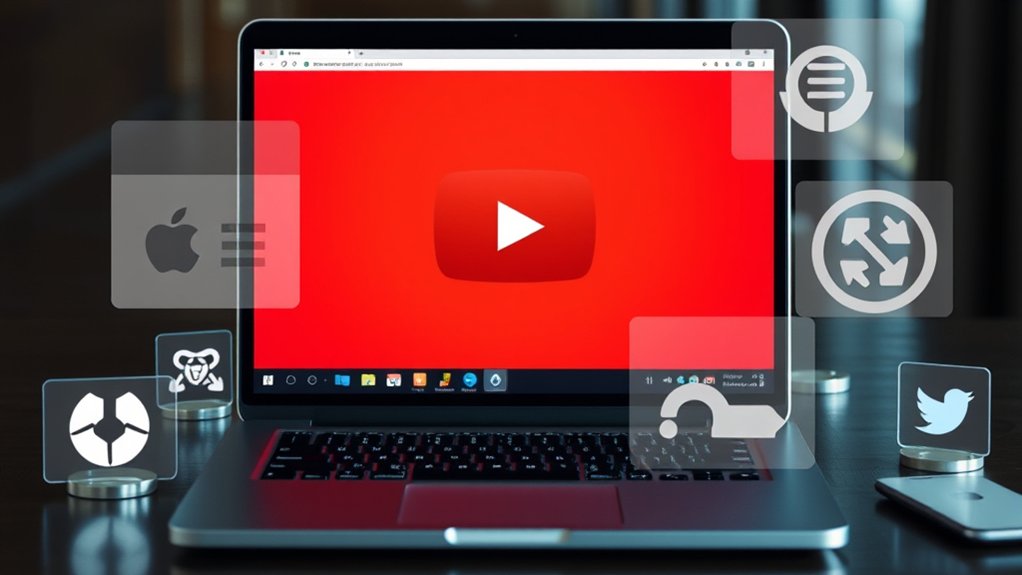RUXIM, or Reusable UX Integration Manager, is a crucial component of the Windows operating system, responsible for managing user experience across applications. Nevertheless, the recently identified vulnerability, CVE-2024-26238, presents significant cybersecurity risks, with a CVSS score of 7.8. This flaw allows attackers to execute arbitrary file write operations with heightened privileges, potentially leading to unauthorized control over systems. Effective mitigation strategies, including security updates and user awareness, are important. Additional insights regarding this critical issue are available.

The Reusable UX Integration Manager, commonly referred to as RUXIM, frequently plays a pivotal role within the Windows operating system by managing the integration of user experience elements. This component is essential for ensuring a cohesive and seamless interface across various Windows applications.
Nevertheless, a serious vulnerability known as CVE-2024-26238 has emerged within RUXIM, presenting significant risks to users and organizations alike. In particular, this high-severity vulnerability is centered on the PLUGScheduler task, a vital function responsible for file operations. The vulnerability has a CVSS score of 7.8, indicating a significant risk level for users. Cybersecurity risks are continuously evolving, necessitating vigilance among users and organizations.
The core of the vulnerability lies in its potential to permit elevation of privilege attacks. Attackers can exploit this flaw to execute arbitrary file write operations with SYSTEM-level privileges, thereby gaining unauthorized control over the targeted system. The implications of such exploitation are profound; successful breaches can facilitate the installation of malware, alteration of sensitive data, and ultimately, extensive control over affected systems. Windows 10 versions 2004 through 20H2 are especially at risk. A robust risk management strategy is essential for prevention against such vulnerabilities, emphasizing the need for timely updates and effective security measures.
The vulnerability allows attackers to gain SYSTEM-level control, risking malware installation and data alteration on Windows 10 versions 2004 to 20H2.
Mitigation strategies against CVE-2024-26238 are imperative for maintaining cybersecurity integrity. Microsoft recommends implementing security updates, such as KB 5001716, to address this vulnerability effectively. Additionally, configuring stricter Access Control Lists (ACLs) for affected directories could minimize the attack surface. User awareness plays a vital role, as standard users may inadvertently contribute to exploitation through accessible file operations.
Although RUXIM vulnerabilities differ from more notorious cyber threats like ransomware or state-sponsored attacks, their potential for disruption remains considerable. Although ransomware typically involves data encryption, RUXIM vulnerabilities focus on system control, potentially leading to systemic failures within organizations.
The unique nature of these threats emphasizes the importance of regular updates, strong user education, and vigilant system monitoring. As cyber threats continue to evolve, RUXIM and its associated vulnerabilities highlight the need for thorough cybersecurity practices to safeguard sensitive information and maintain system integrity.
Frequently Asked Questions
How Does Ruxim Compare to Other Cybersecurity Tools?
Ruxim, primarily focused on enhancing system performance and compatibility, differs markedly from dedicated cybersecurity tools such as Windows Defender.
Whereas Ruxim facilitates updates and maintains user experience, Windows Defender offers extensive virus protection, including features like Smart Screen and Application Guard.
Experts highlight that Ruxim is not designed for malware detection or all-encompassing protection, emphasizing the importance of external tools for more sturdy security measures.
Consequently, Ruxim serves a different function within the cybersecurity environment.
What Industries Benefit Most From Ruxim’s Features?
Industries reliant on legacy software, such as public sector organizations and enterprises, benefit considerably from RUXIM’s features.
This tool improves compatibility, ensuring critical applications remain operational, simultaneously facilitating efficient Windows updates crucial for cybersecurity.
Moreover, consumer technology sectors utilize RUXIMICS.exe for enhanced user interface experiences across devices.
Is Ruxim Easy to Integrate Into Existing Systems?
Integrating RUXIM into existing systems often proves complex because of various technical challenges.
Fundamental tasks include modifying scheduled tasks and adjusting directory permissions to guarantee functionality. Compatibility across different Windows versions is vital, as failure to address potential vulnerabilities, like CVE-2024-26238, can compromise system security.
Experts recommend implementing strict access control measures and maintaining regular security audits to mitigate risks, thereby facilitating a smoother integration process as well as safeguarding system integrity.
Can Ruxim Detect Zero-Day Vulnerabilities?
RUXIM does not possess the capability to detect zero-day vulnerabilities. Its primary role focuses on managing user experience integration tasks within the Windows environment.
As an example, advanced tools like CrowdStrike Falcon are particularly designed for this purpose, offering strong detection against zero-day exploits.
As a result, cybersecurity experts highlight the importance of regular updates and strict access controls to mitigate risks associated with potential vulnerabilities that could arise from components like RUXIM.
What Are the Costs Associated With Using Ruxim?
The costs associated with using Ruxim include financial impacts from potential system compromises, data security risks, and reputation damage.
Organizations may incur significant expenses for mitigation efforts, such as installing security patches and enhancing access control lists, which require technical expertise.
Moreover, ongoing system monitoring and network upgrades present further financial burdens.
Failure to address vulnerabilities could result in regulatory fines, litigation, and long-term customer attrition, emphasizing the critical need for effective cybersecurity management.









